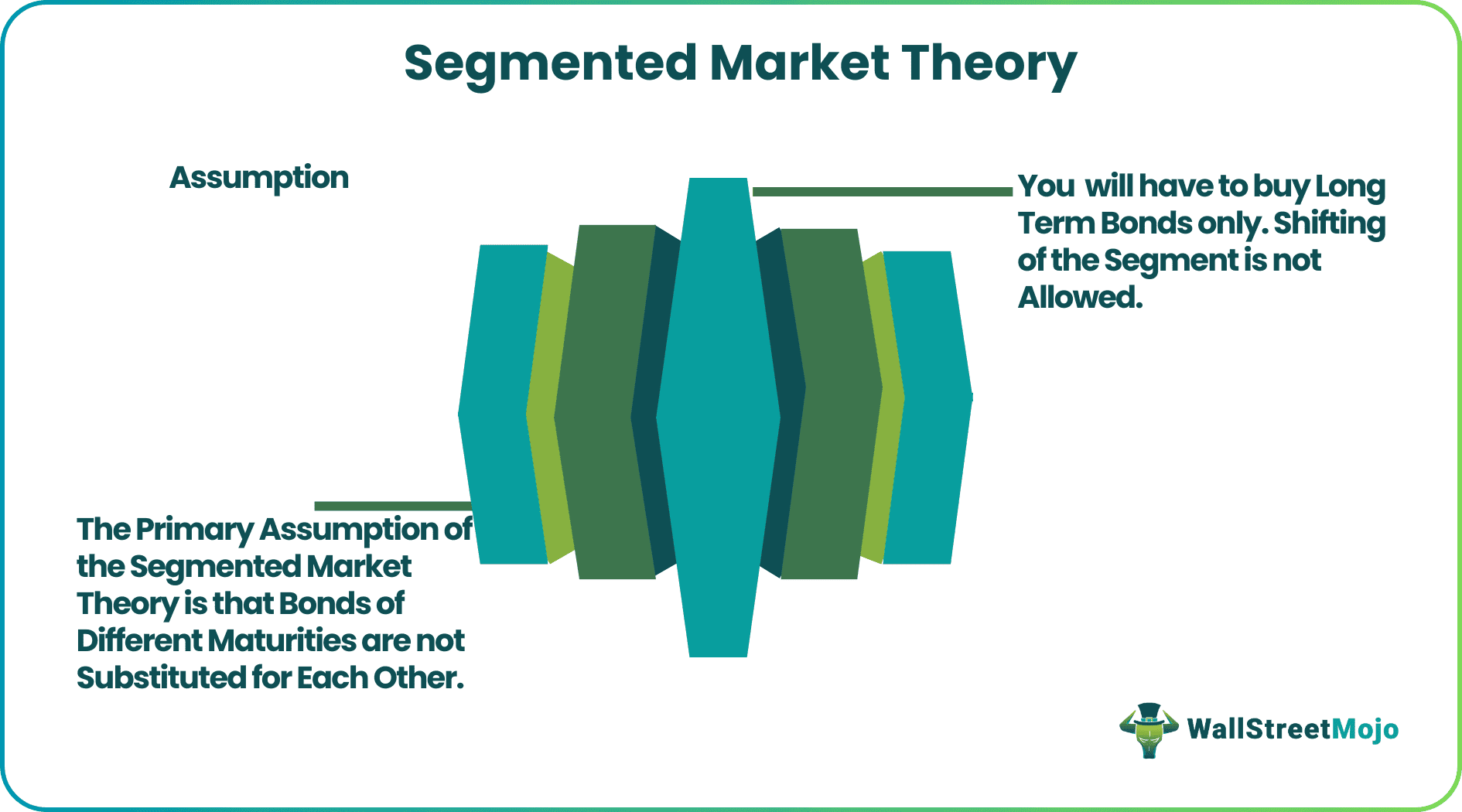Table Of Contents
What Is Segmented Market Theory?
The segmented market theory states that the interest rate curve is actually differentiated in segments based on the bond maturity required by investors and each segment is independent to each other. So short term bond rates are not related to long term bonds and vice-versa and therefore, the yields of each segment are determined independently.

Segmented Markets theory highlights an important property that yield is set by demand and supply of the bonds of a particular segment. The yield offered by the bond is actually based on the demand and supply, and thus this theory is applicable in the real world. The hard assumptions are difficult to carry in the real world scenarios.
Segmennted Market Theory Explained
The market segmentation theory concept came into existence in the year 1957 by a famous American Economist, John Mathew Culbertson. The theory was published in his paper called “The Term Structure of Interest Rates.” In his paper, he challenged the earlier known theory of “Term Structure model-driven by expectations” by Irving Fisher and came up with his theory.
The investors of different segments are different, and the interest rate in each segment is determined by the demand and supply of each segment. The interest rate prevailing in each segment is solely the function of the supply and demand of funds for the particular maturity. The characteristics of the buyers of different bonds with different maturities are different and so are their investment goals. Hence, they choose the segments of bond markets that they are most comfortable investing in, be it short-term, long-term, or intermediate.
Thus each maturity sector (Long Term, short-term, and Mid Term) can be classified as different market segments where the yield has no correlation with other segments and is based purely on the supply and demand of that particular segment.
The segmented market theory assumes that the participants in each segment are either not willing to shift their segment to search for greater yield or are unable to do so due to restrictions imposed.
Example
Let us consider the following example to understand the theory better:
Consider an insurance company, offering long-term life insurance products, ranging from maturities of 20 to 40 years. So, when an insurance company is selling insurance, the company is exposed to long term liability.
In such a scenario, the company aims to off-set the liability for which it decides to invest in assets. As the liability is for the long term, so the asset that the company will invest in will also be of the long term. So, the company invests in long-term bonds.
The insurance companies will mostly invest in the long-term segment. They will not invest in short-term bonds and again roll over after maturity as they will not take the risk of interest rates falling during rollovers. So there is no shift in segments. Investors are fixed in particular segments, and yield in the segment is determined by the demand and supply of that segment.
Assumptions
Some of the assumptions revolving around this theory include the following:
- The primary assumption of the Segmented Market theory is that bonds of different maturities are not substituted for each other.
- It means if you play to invest for the long term, then you can’t buy a short-term bond and rollover.
- One has to buy long-term bonds only. Shifting of the segment is not allowed.
Segmented Market Theory vs Preferred Habitat Theory
Segmented market theory and preferred habitat theory share one similarity and one dissimililarity, which have been mentioned below:
- The Preferred Habitat theory is similar to segmentation theory in the belief that borrowers and lenders stick to a particular segment and prefer the segment strongly, but it doesn’t say that yields of each segment are totally independent and are not correlated at all.
- Preferred habitat states that if investors see they will be receiving more yield in other segments rather than their preferred segment, then they will move from their preferred segment. Shifting of segments is not allowed in Segmentation Theory.
Advantages
As the name suggests, segmented markets theory gives investors an opportunity to try their luck in their desired bond markets with desired maturities. The advantages of understanding this theory are as follows:
- The bond yield of a particular segment will be completely determined by the demand and supply of investors and borrowers of the particular segment. So this is actually true in real life. As per the law of economics, prices are set by demand and supply
- Proper Asset liability management can be done based on this theory as there is a complete hedge of liabilities of a particular segment by investing in that segment. If there were shifts allowed, then investors would have been exposed to interest rate risk during rollovers
Disadvantages
Besides the benefits of learning about this theory, there are limitations of it that also needs to be known to investors and other associated participants. Let us have a look at them:
- Investors actually don’t stick to a particular segment. They change segments as per the opportunity. If they get better yield in any other segment, then they tend to shift segments.
- The theory is based on a hard assumption that Investors can’t change their preferred habitat, which is not true in real life.

